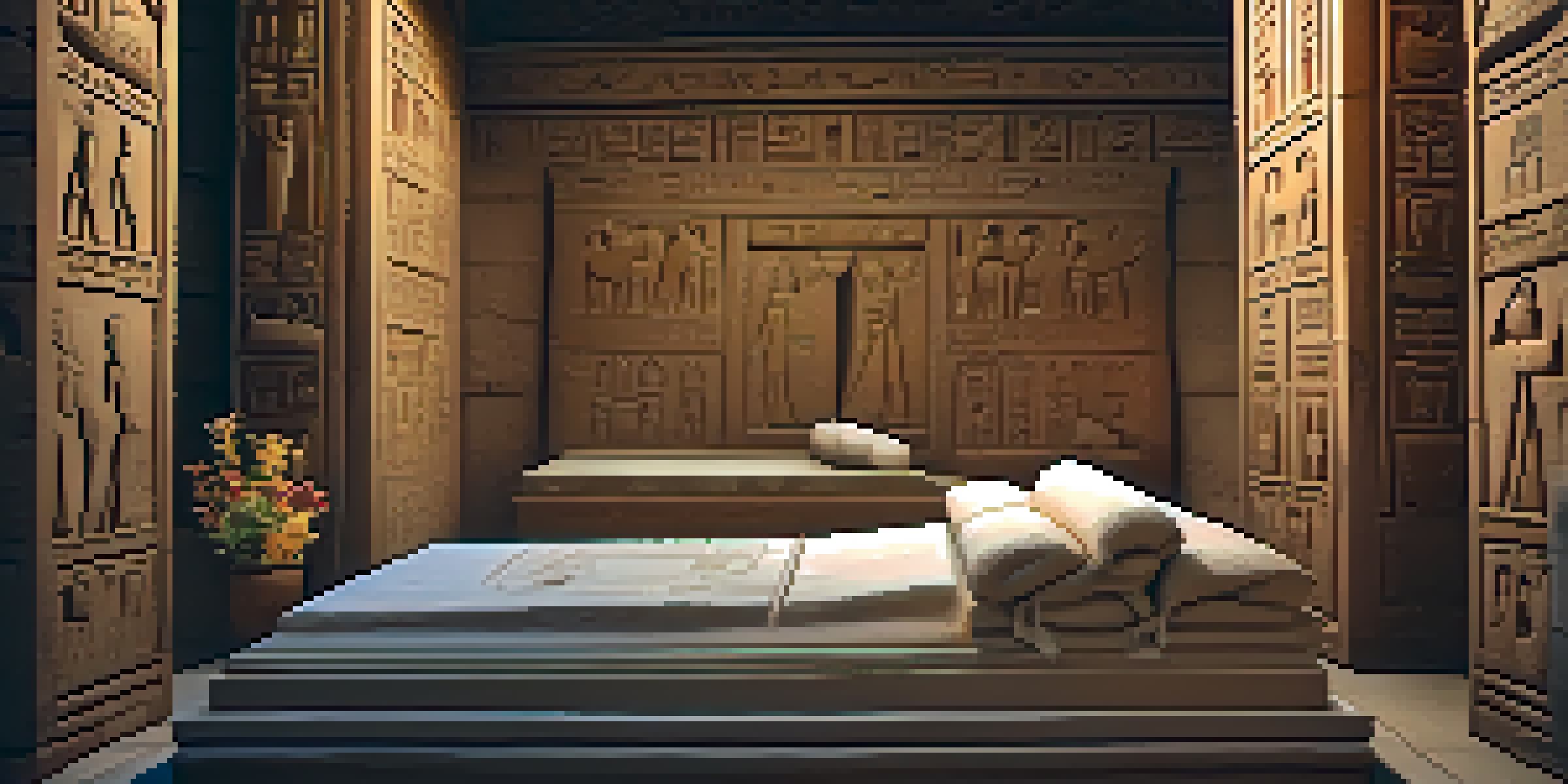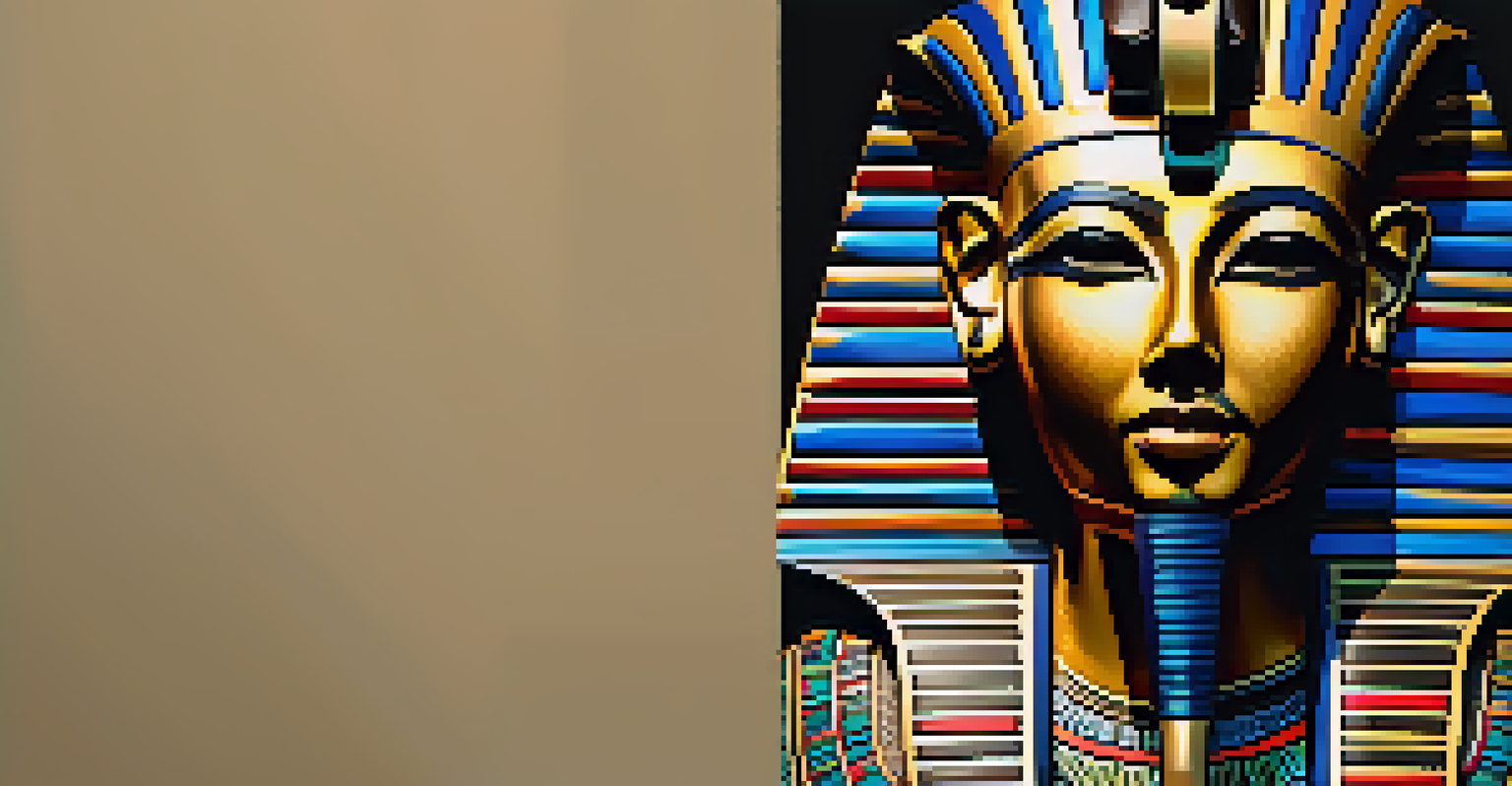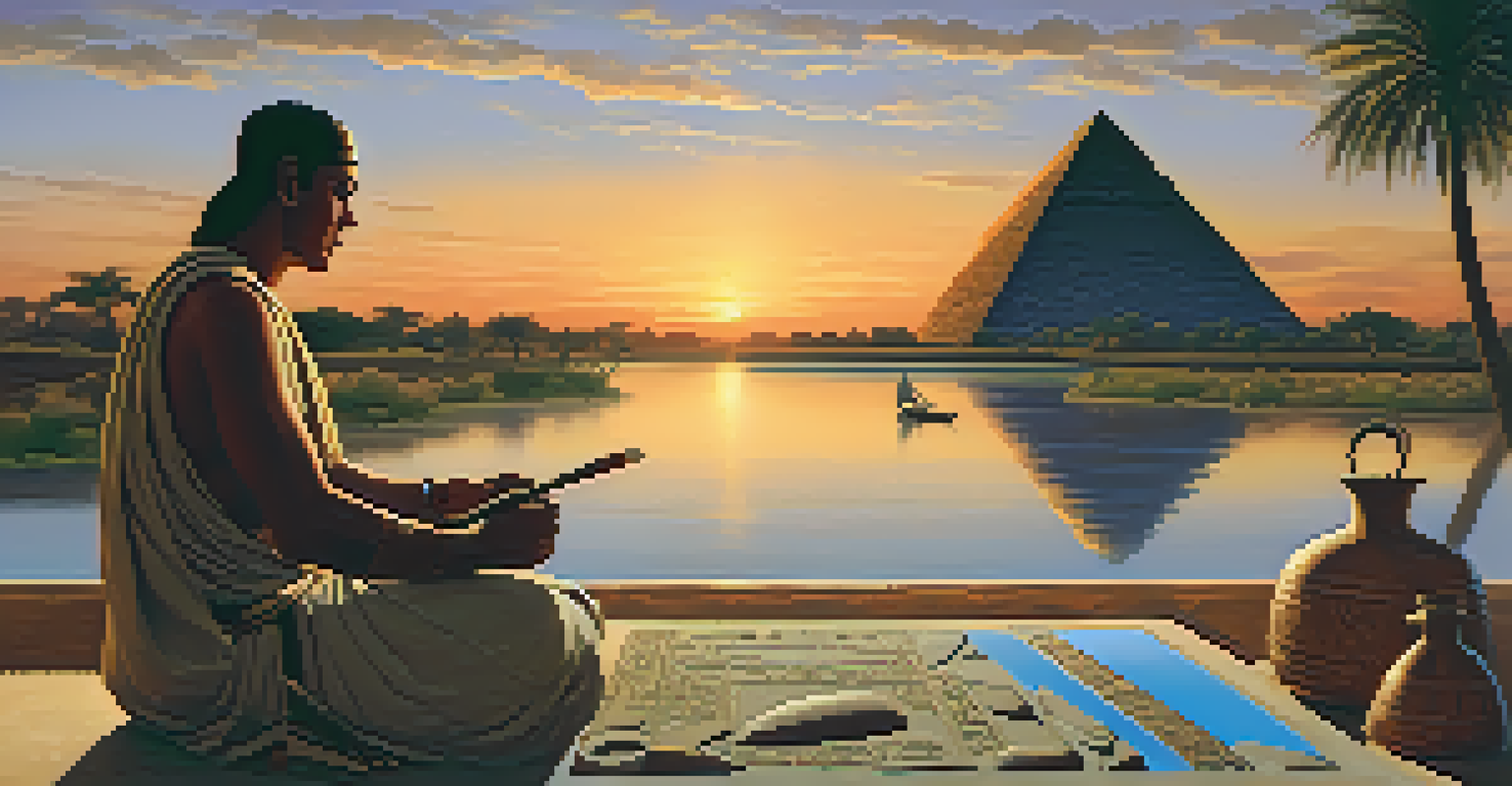Carving in the Context of Ancient Egyptian Funerary Practices

Introduction to Ancient Egyptian Funerary Practices
Ancient Egyptian funerary practices were deeply rooted in their beliefs about the afterlife. The Egyptians viewed death not as an end, but as a transition to another existence. This perspective shaped their elaborate burial rituals, which included mummification, tomb construction, and offerings to the deceased.
Egyptian art is not only a reflection of the culture's beliefs about the afterlife but also a testament to their incredible craftsmanship and dedication to the spiritual journey of the deceased.
At the heart of these practices lay a rich tradition of art and craftsmanship, particularly in the form of carving. From hieroglyphics etched into stone to intricate reliefs depicting daily life, every carving served a purpose, often intending to guide the deceased in the afterlife.
Understanding these practices offers us a glimpse into the values and beliefs of ancient Egyptians. Their dedication to the afterlife influenced not just their funerary customs but also their entire society.
The Role of Carving in Tomb Construction
Carving played a crucial role in the construction of tombs, which were designed to house the deceased and their belongings for eternity. The walls of these tombs were often adorned with detailed carvings that depicted scenes from the person’s life, providing a narrative that would accompany them in the afterlife.

These carvings were not just decorative; they held significant spiritual meaning. For example, images of the deceased engaging in activities they enjoyed while alive served to affirm their identity in the afterlife.
Afterlife Beliefs Shaped Practices
Ancient Egyptians viewed death as a transition to another existence, influencing their elaborate funerary rituals and customs.
Moreover, the material used for carving, like limestone or granite, was chosen for its durability, reflecting the Egyptian belief in the need for permanence in the afterlife. This commitment to quality craftsmanship ensured that these artworks could withstand the test of time.
Hieroglyphics: The Language of the Afterlife
One of the most fascinating aspects of Egyptian carving is the use of hieroglyphics, a system of writing that combined logographic and alphabetic elements. Carved hieroglyphics provided not only a way to record names and titles but also conveyed important messages for the deceased.
In the art of ancient Egypt, the journey into the afterlife was as significant as life itself, captured beautifully in the intricate carvings that adorned the tombs.
These inscriptions often included spells and prayers intended to protect the dead and assist them in their journey through the afterlife. For instance, the famous 'Book of the Dead' is a collection of such texts, many of which were painstakingly carved into tomb walls.
The artistry involved in carving these hieroglyphics was no small feat; it required a mastery of both technique and the spiritual significance behind each symbol. This intricate craftsmanship ensured that the words would resonate with the gods and guide the deceased safely.
Symbolism in Carvings: Life and Death
Carvings in tombs often reflected deep symbolism, particularly relating to themes of life and death. Common motifs included the ankh, a symbol of life, and the scarab beetle, representing renewal and resurrection. These symbols were strategically placed to reinforce the connection between the living and the dead.
For example, carvings of food and drink offerings were commonplace, as they were believed to sustain the deceased in the afterlife. This practice demonstrated the living's ongoing relationship with their ancestors, showcasing a blend of reverence and practicality.
Carvings Convey Spiritual Meanings
Carvings in tombs, including hieroglyphics and symbolic motifs, served not only decorative purposes but also carried significant spiritual messages for the deceased.
Additionally, animals played a significant role in Egyptian carvings, representing various deities and their attributes. The inclusion of such symbols served to invoke divine protection and blessings for the deceased as they navigated the challenges of the afterlife.
Funerary Masks: Carving for Protection
Funerary masks were another essential aspect of ancient Egyptian burial practices, with carving being integral to their creation. Often made of wood or plaster, these masks were intricately carved to resemble the deceased, allowing their spirit to recognize and inhabit the body.
These masks were not merely decorative; they carried protective qualities. Many were adorned with inscriptions or images of gods to shield the deceased from harm and ensure a safe passage to the afterlife.
The craftsmanship involved in creating these masks was remarkable, blending artistry with spiritual significance. Each mask was unique, reflecting the individuality of the deceased while also fulfilling an important role in their journey after death.
Carving Techniques and Tools Used
The techniques and tools used for carving in ancient Egypt were as diverse as the art itself. Craftsmen often employed chisels made from copper or bronze, which allowed for precision in their work. They also utilized hammers and other tools to shape larger stones into workable pieces.
The process of carving was labor-intensive, requiring skill and patience. Craftsmen would first sketch designs on the stone before meticulously chiseling away to create depth and texture. This attention to detail resulted in carvings that conveyed emotion and life.
Legacy of Egyptian Carving Arts
The intricate carvings left behind provide profound insights into ancient Egyptian culture, reflecting their values around life, death, and the afterlife.
Moreover, the choice of stone played a significant role in the quality and longevity of the carvings. Harder stones, like granite, would last longer but required more effort to carve, while softer stones allowed for easier manipulation but had a shorter lifespan.
Legacy of Carving in Ancient Egyptian Culture
The legacy of carving in ancient Egyptian funerary practices extends beyond mere aesthetics; it reflects a culture deeply invested in the afterlife. The carvings found in tombs continue to provide invaluable insights into the beliefs, customs, and daily life of the ancient Egyptians.
These artworks have inspired countless generations, influencing modern art and archaeology. The detailed carvings serve as a bridge between the past and the present, allowing us to connect with a civilization that flourished thousands of years ago.

As we study these carvings, we not only appreciate their artistic value but also understand the profound respect that ancient Egyptians had for life, death, and the journey beyond. Their commitment to crafting such enduring legacies speaks volumes about their worldview.